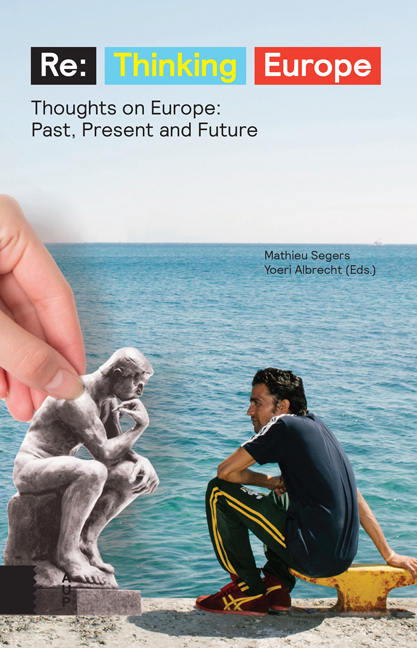Introduction
Published online by Cambridge University Press: 07 January 2021
Summary
On 13 November 2015, a year of European recklessness was brought to a sombre conclusion by the terrorist attacks in Paris.
Shortly after the attacks, there was a run on Ernest Hemingway’s A moveable feast; buying the book offered some consolation. In the book, the young Hemingway recounts his adventures among the American community in Paris in the 1920s. In those days, the rive gauche acted like a magnet for a select American elite.
After the shock of terror, the title and subject of Hemingway’s book appealed to the imagination; that is to say, to those who were frequenting the outdoor cafes again while the pavements around Bataclan were still stained with blood. The short-lived popularity of A moveable feast is illustrative of today's mood of insecurity in Europe.
Europe was looking for support, for the umpteenth time. But in the context of the Parisian autumn of 2015, the title of Hemingway's book gave a false impression in this respect.
Hemingway and his friends saw Europe, traumatized in the wake of 1914-1918, as the “banlieue of Paris”. Their Paris, to be precise, where like “iridescent flies” they were “caught in the black web of an ancient and amoral European culture”, as Sinclair Lewis, one of Hemingway's fellow travellers, wrote; a world in which they could abandon themselves to the desire-driven charade, for an instant or for somewhat longer. This was something very different from American dreams; it was freedom.
But this is Europe in the eye of the beholder. Many ordinary Europeans are afraid of this Europe, where things are not as they seem; this cradle of the Enlightenment, where the basic condition is so often one of confusing surrealism, and a single question always gives rise to disquiet because it remains unanswered: what is Europe? After the fall of the Berlin Wall, Jacques Derrida wrote in his essay, ‘The Other Heading’: “Old Europe seems to have exhausted all the possibilities of discourse and counter-discourse about its own identification.” That is true.
And yet this soul-searching is the only certainty that Europe and Europeans have to hold on to. The pure clarity of “this strange white light, this far-away blue sky” on the other side of the Atlantic Ocean – as described so strikingly by Henry James in the nineteenth century, in his novella The Europeans – is a light that is not to be found above the Old Continent.
- Type
- Chapter
- Information
- ReThinking Europe Thoughts on Europe: Past, Present and Future, pp. 13 - 36Publisher: Amsterdam University PressPrint publication year: 2016



